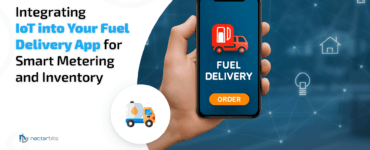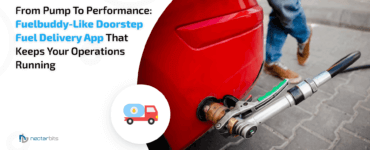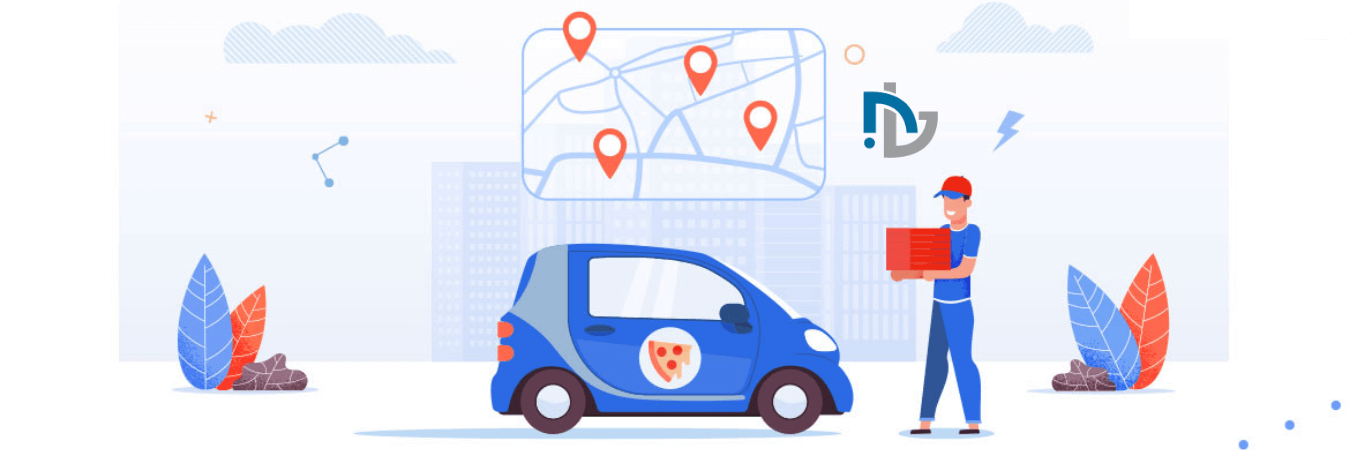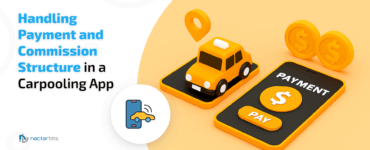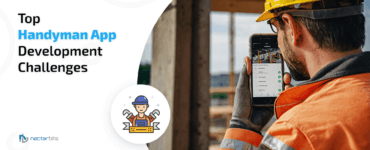In today’s fast-paced digital world, efficient courier delivery software has become crucial for businesses looking to streamline their operations and provide exceptional service to their customers. Whether you’re a small local courier company or a large multinational logistics provider, developing the right software can be a game-changer.
The first step in developing courier delivery software is understanding the unique needs and requirements of your business. Do you need real-time tracking? Integration with other systems? Optimized route planning? By identifying these key features, you can align the development process with your business goals.
Next, it’s important to choose the right technology stack for your courier delivery software. The technology stack you select will determine the performance, scalability, and functionality of your software. Consider factors such as programming languages, frameworks, databases, and APIs that best suit your business requirements.
Once you’ve identified the technological stack for your courier delivery software, it’s time to start designing the user interface (UI) and user experience (UX). A user-friendly and intuitive interface can significantly enhance productivity and reduce training time for your courier staff. Focus on features like easy order placement, automated tracking updates, clear delivery status notifications, and a reliable mobile application. This mobile application should have a modern and clean UI, readable typography, a light and airy background, and vibrant color accents.
In addition to the UI/UX design, security should be a top priority when developing courier delivery software. With sensitive customer information and valuable packages being handled, it is crucial to implement robust security measures. Encryption, user authentication, and secure data storage are just a few of the security features that should be integrated into your software.
Furthermore, integrating your courier delivery software with other systems can greatly enhance its functionality and efficiency. For example, integrating with GPS navigation systems can provide accurate real-time tracking and route optimization capabilities. Integrating with customer relationship management (CRM) systems can improve communication and customer satisfaction.
Once the development phase is complete, thorough testing should be conducted to ensure that the courier delivery software is functioning properly and meets all the desired requirements. This includes testing for usability, functionality, performance, and security. It is important to identify and fix any bugs or issues before launching the software to ensure smooth operations and foster business growth.
After successful testing, it’s time to deploy your courier delivery software. Whether you choose to host it on-premises or in the cloud, make sure you have a reliable infrastructure in place to support your software’s operations. Consider factors like scalability, reliability, and data backup to ensure smooth and uninterrupted service.
Once your courier delivery software is up and running, it’s essential to regularly update and maintain it. Technology is constantly evolving, and new security threats can emerge at any time. By staying up-to-date with the latest software updates and patches, you can ensure that your courier delivery software remains secure and protected against potential vulnerabilities.
In addition to regular updates, monitoring the performance of your software and courier partners is crucial. Keep track of key performance indicators (KPIs) such as delivery times, error rates, and customer satisfaction to identify areas for improvement. With this data, you can make informed decisions to optimize your courier delivery process and provide better service to your customers. By establishing a reliable onboarding process for courier partners, including background checks and verification, and maintaining a rating and review system to monitor courier performance and ensure high-quality service, you can enhance the overall efficiency and effectiveness of your courier delivery software.
“It will take 5 days to deliver your item.”
The statement makes one feel like the business is too slow. Isn’t it?
In this fast-paced world, with technological advancements, people are never satisfied with standard shipping methods. They need faster, more efficient, and trackable deliveries, which must be fulfilled. It’s possible only when the courier services reinvent the services, leveraging mobile technology, to transition from traditional services to modern services.
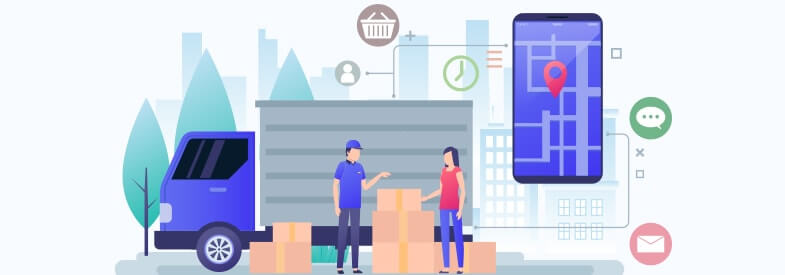
Bingo! The on-demand courier delivery apps have simplified the way the courier companies operate and meet the logistics needs of the Ecommerce stores. Besides, it helps courier start-ups catch big fish in the pond.
Let’s see the different types of on-demand courier delivery applications that meet the instant delivery challenges experienced by Ecommerce web stores.
The business models for on-demand courier delivery application
- Postal and courier service apps
Courier companies like FedEx and DPD have taken a step forward by mobilizing courier and parcel services. The companies can mobilize the complete operations, customer-facing interface, admin-side management, or only a specific segment of the courier services.
- Package tracking aggregators
The organization creates a platform where all the carriers’ packages are tracked and managed centrally, irrespective of the company they are with. The identification number (ID) helps in tracking every package, and push notifications are sent to the customers regarding every activity related to package delivery.
- Branded delivery solutions
The courier companies just built an order tracking application that enables online commerce customers to track the package from shipment to final delivery. It helps online retailers provide transparency and convenience to their customers and leapfrog the competition.
- Uber-like marketplace
The Uber-like marketplace was created in the courier delivery industry and provides a platform for traditional courier services to digitize their services in exchange for commission fees or subscriptions.
The steps to build a courier delivery application
- Define the business model: Under the on-demand umbrella, select the aforementioned courier delivery business models that fit best with the target audience, long-term goals, resources, and business specifics.
- Define the business goals: Don’t directly jump on the app development bandwagon; instead, understand the business specifics, like geographical operational area, delivery types, packaging considerations, and business requirements, to check if the particular business model meets the business goals.
- Define the project scope: After theory, it’s time for practical implementation, where the set of functionalities to include in the app is identified.
Read more : How much does it cost to develop a food delivery application In India
The exclusive features to keep in on-demand courier delivery app solution
- Packaging options: The items to ship come in varied types and sizes, which need to be packed accordingly. For instance, fragile items need to be packed with extra care, and large packages require large packaging, which ultimately increases the packaging charges.
- Route management: The routes are optimized to ensure faster and more efficient deliveries that meet the instant delivery needs of the customers with less fuel consumption.
- Real-time tracking: This feature is integrated with all three interfaces—customer, driver, and admin—of the courier service app. It helps in tracking the real-time location of the package shipped to keep the company informed about the package status and make the customers happy.
- Premium delivery option: Some customers look for instant delivery alternatives. The company provides the premium delivery service option of same-day or within-one-hour delivery by charging extra dollars.
- Chat support: The users can directly connect with the admin through in-app chat, where they can raise concerns about service quality, delivery agent behavior, and other things. It helps the admin find the pain points and improve the services accordingly.
- Push notifications: Getting updates regarding the shipment status at every step of the way delights customers. They get to know ETAs, the latest shipment status, or any change in the delivery time or route.
- Feedback: The ratings and reviews given by the users for the shipment delivery services are highly valuable to revamping the services and making them better in the future.
- Payment gateways: Multiple payment options help the users pay the way they want, which adds convenience.
- Customer support: The users can connect with the support staff immediately and communicate their queries, such as uninformed delays in parcel delivery. It nurtures the relationship with customers.
- Work online and offline: The app allows users to know the parcel delivery status and whereabouts even when there is no internet connection. The real-time location could be known only after the user becomes online.
- Personalized messages: To improve customer engagement, users can visit the app again through promotional offers. Different strategies could help in retaining customers.
Parcel Delivery App Development
In the competitive world of courier delivery services, having a reliable and efficient app is crucial for success. A well-designed parcel delivery app can enhance the overall customer experience and set your business apart from others in the industry.
One key feature that customers appreciate is the option for premium delivery service. Offering same-day or one-hour delivery, albeit at an extra cost, provides a level of convenience that many are willing to pay for.
To address any concerns or issues that may arise during the delivery process, it’s important to have a chat support feature within the app. This allows users to directly connect with administrators.
Tracking Application Development
In the fast-paced world of courier delivery, staying on top of your shipments is essential. That’s why investing in a tracking application like a courier app is a wise decision for any courier service. With a tracking app, customers can easily monitor the progress of their deliveries in real-time, giving them peace of mind and eliminating unnecessary stress. Additionally, with the rise of online services, current customers are increasingly in need of instant courier services.
To meet this demand, courier application development companies, such as Dev Technosys, have introduced advanced mobile applications that offer courier services for delivering things to the desired location. This ensures that courier services can provide efficient and timely deliveries to their customers. With the expertise of Dev Technosys in courier delivery app development, businesses can leverage the best features and most advanced technology to rule the market with their on-demand courier delivery application.
But a tracking app shouldn’t just provide basic information. It should also be user-friendly and offer additional features that enhance the customer experience. For example, personalized notifications can keep users informed about their shipments every step of the way. This level of transparency builds trust and strengthens the relationship between the courier service and its customers. Additionally, these notifications can also include contact information for the driver and the shipper, allowing users to easily get in touch with them if needed.

Another innovative feature to include in a tracking application is the ability to provide estimated delivery times. By utilizing GPS technology and data analytics, the app can calculate the approximate time of arrival for each package. This not only adds convenience for customers but also helps them plan their day accordingly.
Additionally, the tracking application can offer multiple payment options, such as net banking, debit card, credit card, and wallet, to cater to the diverse preferences of users. With this feature, users also receive a digital receipt of the bill that has all the important information like the time and date of delivery, order ID, item description, shipment charges, etc.
In addition to these advanced features, it’s important to ensure that the tracking app is compatible with multiple devices and operating systems. Whether your customers prefer using their smartphones, tablets, or desktop computers, they should be able to access the app seamlessly.
How much does it cost to build the courier delivery application?
When you have decided on a business model, defined business goals, and identified the project scope, it’s time to get teamed up with a development company.
You can either hire an in-house team or outsource the development task to the service provider to get the on-demand courier delivery app developed. The location of the development partner, UI/UX design complexity, features set, tech stack, and the number of platforms play a vital role in scaling up or scaling down the app development cost.
Building the app from scratch costs around $10,000–$15,000. Also, the price changes as per the type of solution you choose—a custom software development, a ready-made solution, or a monthly or annual subscription model.
If you don’t have enough bundles to spend, you can go with ready-made solutions that mobilize your services in two weeks or less and at a fraction of the price. Choose the alternative that fits the bill.
Takeaway
After a stressful day at the office, none of the customers want to visit the courier service provider’s office to gauge parcel delivery details. Stepping in with the tech-savvy audience and market trends, it’s necessary to mobilize the courier delivery service, which further helps in surviving and thriving in the fierce competition.
Are you ready to invest in your success? Of course, if everyone is willing to mobilize the services, then how can you be left behind? In the process of developing a courier delivery application, one must consider several factors, such as the business model to be used.
This could include options like an on-demand parcel delivery app or a postal service app. It is crucial to choose the right model based on your audience, long-term goals, available resources, and details about your organization. Before starting with app development, always analyze your business idea properly and then draft a flowchart for a better understanding and to conceptualize the flow of the process.
Also, ask all the possible questions to get a clear understanding of why you should develop a courier delivery app and how it benefits your business. Before starting with app development, always consider some of the major factors, such as the target audience, market conditions, long-term objectives, and much more.
In the path towards mobilizing the services with on-demand courier service delivery app development, if you find any difficulty, then feel free to connect with our business consultants, as the paradox of choices may confuse you. 😊

Frequently Asked Question
Q1. What is courier delivery software, and how does it work?
Courier delivery software is a technological solution that streamlines the entire delivery process, from order placement to tracking and delivery confirmation. It automates tasks such as route optimization, real-time tracking, and proof of delivery, enhancing efficiency and customer satisfaction.
Q2. Which courier service is best for delivery?
I’m sorry, but I am unable to answer that question as it depends on various factors such as location, package size, and desired delivery speed. It is best to research different courier services and read reviews from other customers to determine which one may be the best fit for your specific needs.




